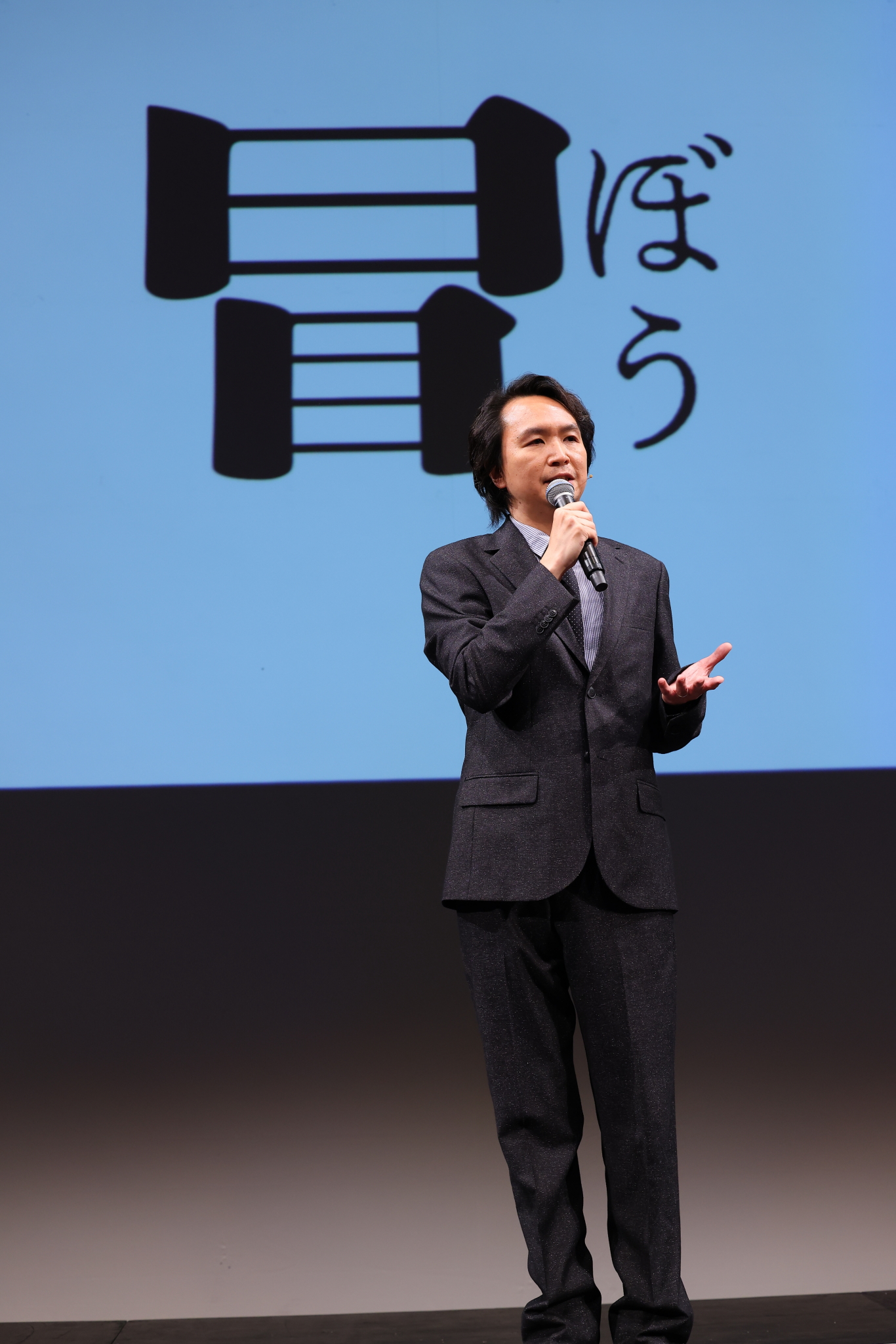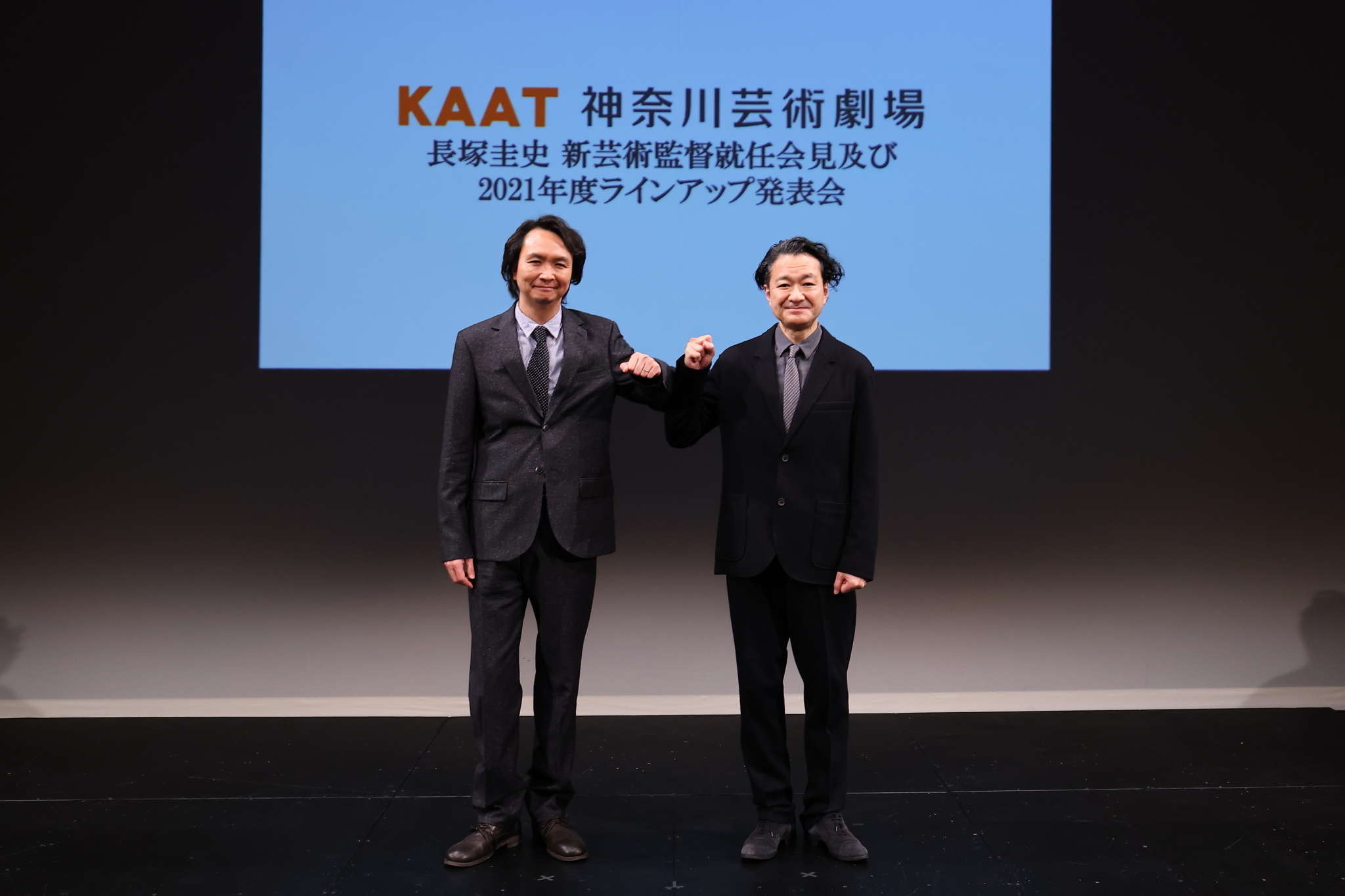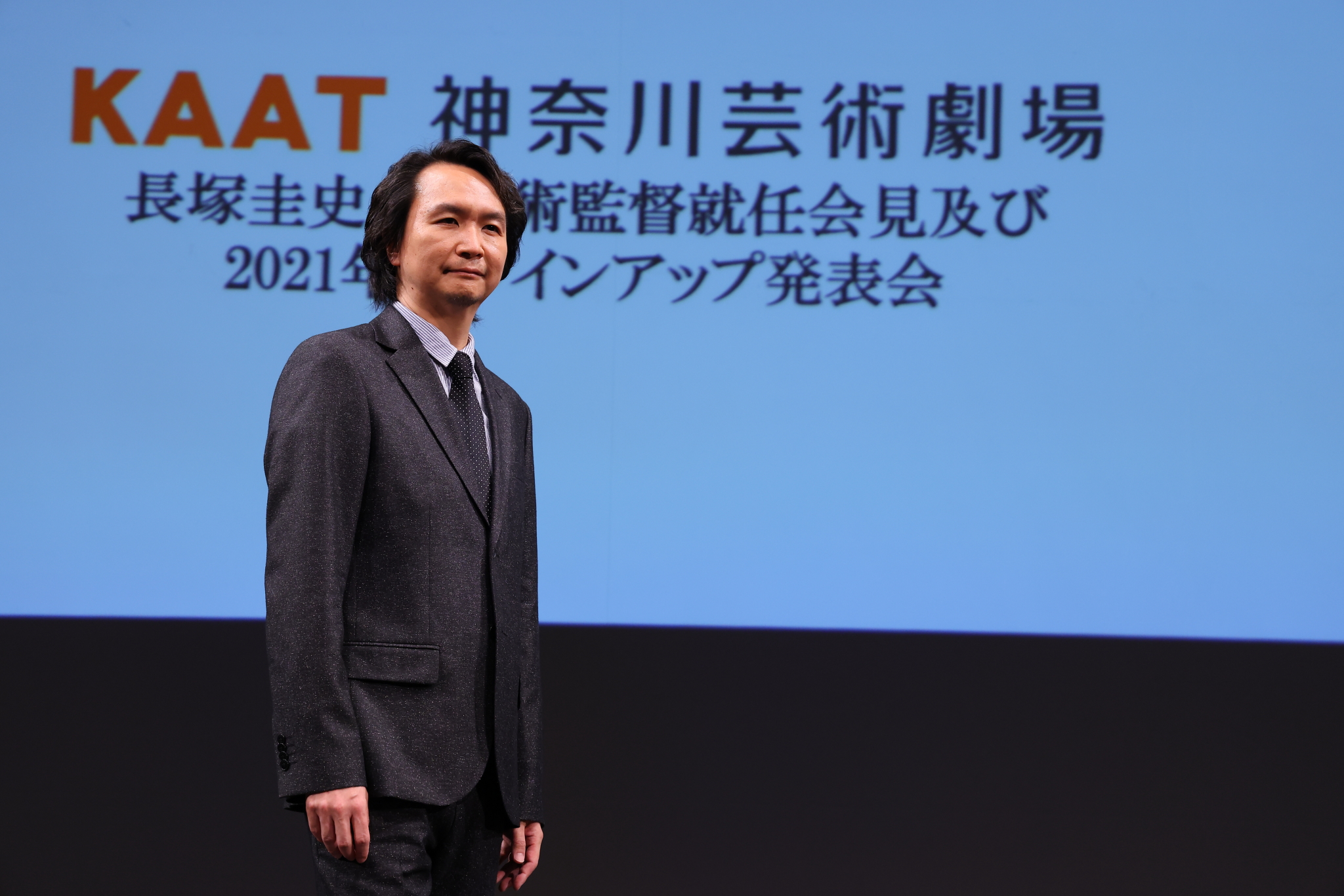
The 45-year-old playwright, director and actor Keishi Nagatsuka takes up his post as the third Artistic Director of Kanagawa Arts Theatre (KAAT) on April 1, 2021.
Comments from Nagatsuka on his new role
During my five-year period of service as KAAT’s Artistic Director, I would like to open up this theatre as much as possible, both to the general public and outside dramatists.
To do that, I have set three primary targets:
(1) To start a seasonal line-up.
With the aim of giving our annual schedule more identity, I will create a structure of fixed themes running through our yearly line-up.
In practice, the period from April to June will become our “pre-season,” when we focus on presenting experimental programs. Then in summer there will mainly be a line-up for children, followed by around six months through March featuring works related to a theme selected for that year.
For example, I set this year’s theme as “bou” — a kanji character meaning “to take” or “to attempt,” but which also has the connotation of “to push forward” or “to force out.” So I especially aim to program challenging works as the theme of my first year.
(2) ‘To force out’ from KAAT’s building.
During the last 10 years, KAAT has gained a great reputation as a public theatre which actively seeks out and dares to present cutting-edge works. In fact that’s probably why KAAT came to many people’s attention.
Now, though, I want to make KAAT attractive to people who may have never seen a play or visited a theatre before.
Initially, we will actively reach out to passers-by by building a simple theatre in the atrium (entrance area) where we will present “Oushou (King of the Shogi Game),” a 1947 work by Hideji Hojo based on the life of the late shogi legend Sankichi Sakata. I first adapted and directed this three-part play in 2017, though this KAAT production will be a reworked version that anyone walking past our building will be able to watch through the windows as costumed actors perform in full view.
As another way “to force out” theatre beyond KAAT’s building, I have also asked the renowned globe-trotting playwright and director Kuro Tanino to create and present a new play with local citizens from Kanagawa Prefecture — and I am thinking about letting people who visit KAAT look in on the rehearsals.
Then in February 2022, after my other program, “Journey to the West,” closes at KAAT I will organize a tour with it to five or more places in collaboration with other theatres in Kanagawa Prefecture. As for the play itself, that will be an adventure story inspired by the famous Chinese novel “Journey to the West” — but with lots of episodes related to folk tales from this area.
So by reaching out in these ways, I hope to encourage more people to enjoy theatre at KAAT. However, KAAT is not just for performers and audiences, and I want local people to use this public theatre and spend more of their time here. To encourage them to do so, we will put tables and chairs in the atrium to create a relaxing space to meet or just spend time.
(3) To make KAAT’s facilities available for general theatre creation year-round.
Even though KAAT has always been a dynamic creative hub, I have always felt that theatre creation in Japan could be more free and experimental. So at KAAT from now on, that process will no longer need to be related to a scheduled production, but could be happening all the time as part of what I’m calling the theatre’s “development project.”
In such unrestricted creative periods, artists who apply and are selected will be offered the use of one of our rooms, studios or rehearsal spaces. They may then choose to spend their time thinking as long as they like, or trying out whatever they wish, without it needing to connect with any specific performance.
As part of this development project, it is hoped that artists will also encounter new people through opportunities I will create for casual reading meetings in which directors and other creators may discover plays they’ve never known and may consider staging in the future.
Finally, even if we are regrettably required to close the theatre to the public again due to the pandemic, by adopting these new ways of working KAAT will be able to continue with certain theatre activities, including offering creative space for many dramatists.


